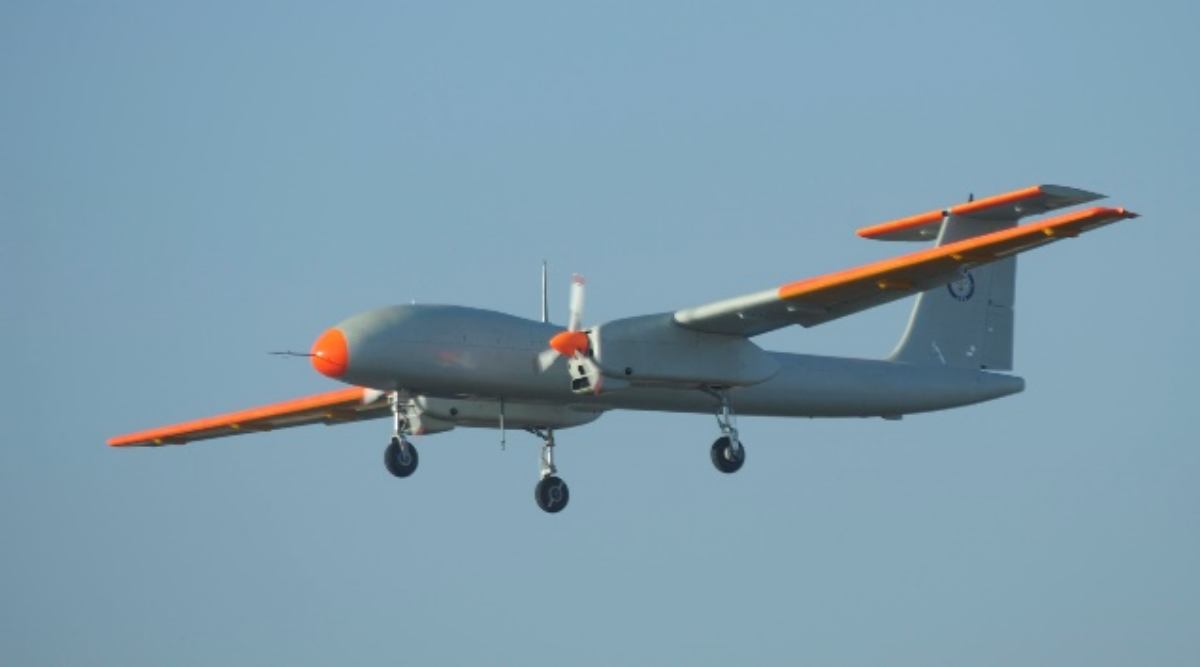Tri-service procurement of world’s most advanced drones leveraged for transfer of niche technologies to DRDO, Chief of Naval Staff Admiral R Hari Kumar tells Vishal Thapar in an exclusive interview, , India-US Military Cooperation, MQ9B Sea Guardian, Sky Guardian, indian navy, Admiral R Hari...

www.businessworld.in
Tri-service procurement of world’s most advanced drones leveraged for transfer of niche technologies to DRDO, Chief of Naval Staff Admiral R Hari Kumar tells Vishal Thapar in an exclusive interview
20
December, 2022
by
Vishal Thapar
India has negotiated for local assembly of the world’s most advanced High Altitude Long Endurance (HALE) combat and reconnaissance drone, the American MQ9B Sea/Sky Guardian Remotely Piloted Aircraft (RPA). These are more capable follow-ons of the iconic Predator.
“Through assertive negotiations, instant acquisition proposal has been leveraged for assembly of at least 60 % of the quantity of aircraft proposed for procurement in India,” Chief of Naval Staff Admiral R Hari Kumar told Businessworld in an exclusive interview.
A Tri-services case for the procurement of 30 MQ9B from the US under the Government-to-Government Foreign Military Sales (FMS) route is under process.
Initially estimated at $3 Billion, the deal will also involve “collaboration with DRDO for transfer of certain niche technology required for indigenous D&D of HALE RPAS in India,” Admiral Hari Kumar disclosed to Businessworld.
“Setting up of a Performance Based Depot Level Maintenance Repair and Overhaul (MRO), Sea Guardian Global Sustainment Support (SGSS)” would be part of the programme, the Chief of the Indian Navy stated.
“These enabling agreements along with the procurement case would make India a Drone Hub as envisioned by Hon’ble PM,” Admiral Hari Kumar added.
Earlier, he had said that a discussion was underway amongst the three services on “whether the (procurement) numbers need to be rationalized”.
When it matures, the MQ9B deal will be one of the defining symbols of India-US military cooperation. It will also mark the first assembly of the iconic combat and surveillance drone outside of the US.
“The MQ-9B is designed to fly over the horizon via SATCOM for up to 40 hours in all types of weather and safely integrate into civil airspace, enabling joint forces and civil authorities to deliver real-time situational awareness anywhere in the world—day or night,” it is stated by General Atomics, the manufacturer, which terms these as “the next generation of RPAS, delivering persistent intelligence, surveillance and reconnaissance (ISR) around the globe”. It can fly at altitudes of up to 50,000 feet.
While ISR is its bread and butter, it is the combat capability, over-the-horizon targeting, anti-surface warfare, anti-submarine warfare, defensive counter-air, airborne early warning and electronic warfare features which give it the edge.
The MQ9B features nine hardpoints with a maximum external payload capacity of 2155 kg. “This enables armed forces and governments to easily integrate sovereign payloads and mission systems for their own uniquely tailored solutions,” General Atomics states.
Admiral Hari Kumar recently acknowledged that the Indian Navy found the experience of taking two MQ9As on lease from the US of “great value”, expressing confidence that these RPAs would “provide great value to all three services”.
Recently, these leased drones completed 10,000 flight hours in support of Indian security missions. This was achieved in two years.
“To put this into perspective, 11 P8I Long Range Maritime Reconnaissance aircraft of the Indian Navy were able to fly 29,000 flight hours in 9 years while 2 MQ9A logged 10,000 flight hours in just 2 years. This is the true measure of a long endurance UAV: Persistent surveillance. Imagine what a fleet of about 10 MQ9Bs could do in exercising constant vigilance,” an observer pointed out. The original proposal envisaged an equal three-way split of the 30 HALE RPAs to be procured amongst the services.








